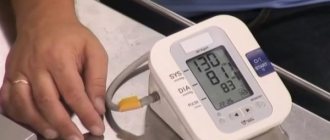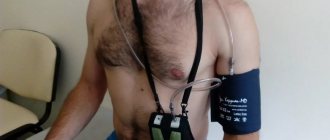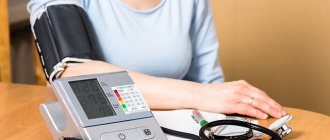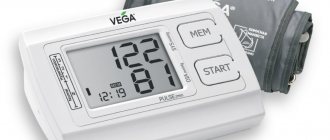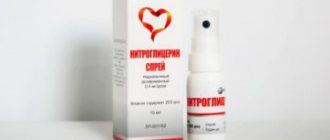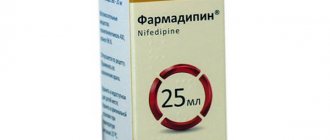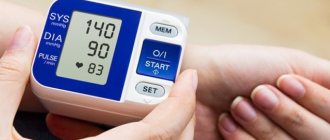Download Slideshow
PDF file
The patient's diary is filled out independently. Filling out the diary is a mandatory condition for conducting the survey. If the diary does not record the stress, medication and your sensations, the doctor will not be able to assess their effect on the heart and the study may be useless.
During monitoring, you should not wear synthetic or woolen underwear (cotton only). You can place the monitor next to you while you sleep.
Instructions for preparing for Holter monitoring
The diary should note:
Climbing stairs
During ECG and blood pressure monitoring, it is recommended to perform three physical activities in the form of climbing stairs, of course, if you do not have a restriction on the motor mode, which is established by the attending doctor. Climbing the stairs must be done three times, distributing them throughout the day, for example: in the afternoon, in the evening and in the morning immediately after climbing. You should climb at a normal pace, without stopping, until any unpleasant sensations appear in the heart area (shortness of breath, palpitations, pain, interruptions, etc.) or physical fatigue. Stop as you always do - don't try to do more work than usual! It is important for us to assess exactly your daily exercise tolerance. If there are no unpleasant sensations, the ascent continues to the end of the stairs and ends there. The load should be performed according to the following method:
- Before going up, on the first floor, you should stand and rest for 3 minutes to restore your heart rate (pulse);
- Press the button on the ECG monitor or the “sensation” button on the blood pressure monitor, and then continue climbing at your usual pace ;
- At the end of climbing the stairs, press the same button again. In the diary it is necessary to note: the number of steps climbed, the start time of the climb and its duration, as well as the unpleasant sensations that forced you to stop the load.
Blood pressure self-monitoring diary
Blood pressure control. Self-control diary. Measurement rules. Recording tonometer readings. blood pressure diary in Excel for filling out on the computer and table forms for printing and filling out manually.
Prescribing a blood pressure self-monitoring diary
The blood pressure self-monitoring diary is used to record tonometer readings at certain intervals. To measure blood pressure at home, it is better to purchase a fully automatic or semi-automatic device, but not a manual one with a stethoscope.
Automatic blood pressure monitor Rossmax
You can see prices for automatic blood pressure monitors in your region on the Zdravcity service website in the “Medical Equipment” section.
Observations of changes in blood pressure over time using a self-monitoring diary will be useful not only for you, but also for your attending physician to assess the effectiveness of prescribed medications to maintain normal blood pressure. Keeping a self-monitoring diary should become mandatory for all people with hypertension.
Option No. 1 of a header for a self-control diary
| date | Time | HELL | Pulse | Well-being |
| / |
The first option is suitable for those people who have the opportunity to measure and record pressure at any time of the day (retired people and people who have the opportunity to use a tonometer at the workplace). It is better to coordinate the approximate schedule of measurements with your doctor.
Option No. 2 of a header for a self-control diary
| date | Morning | Evening | Well-being |
| HELL | Pulse | HELL | Pulse |
| / | / |
The second option is suitable for everyone, including those people who have the opportunity to measure blood pressure only before and after work.
In this case, it is advisable to take measurements at the same time both in the morning and in the evening with reference to some event, so as not to accidentally forget or miss taking readings, for example, immediately after waking up, before breakfast, after breakfast, before dinner, after dinner, before bed, etc.
Check with your doctor about the best time to take morning and evening blood pressure measurements.
Example of a self-monitoring diary in Excel
If you have constant access to a computer, then filling out the diary can be slightly automated using Excel.
For myself, I chose the first option of the self-monitoring diary, inserted a button into it to add readings, which opens a form with the date and time automatically filled in.
If necessary, they can be edited both in the form itself and after recording on the worksheet.
Instructions for filling out a blood pressure self-monitoring diary in Excel:
- Click the “Add” button: a form will open with the date and time already filled in.
- Add the tonometer readings to the appropriate fields.
- “Well-being” and “Note” can be selected from the drop-down list*, filled in yourself, or left blank.
- Click the “OK” button and the data from the form will be written to a new row in the table, and the workbook will be saved.
* You can independently specify what data will be shown in the drop-down lists. To do this, simply edit the cell values in the “Wellness” and “Note” columns on the “LD and Appointments” worksheet. The cells of these columns must be filled from top to bottom without gaps.
In the “Note” column you can write:
- presence of arrhythmia;
- medications taken and their dosage;
- body weight, if it is monitored;
- doctor visits;
- other useful information.
It is convenient to move around the form while recording readings using the “Tab” or “Enter” keys. During the transition, the “Well-being” and “Note” fields are skipped, since they are not always filled out.
Notes and download links
You can download the self-control diary from the link below. The archive offered for downloading contains two files: a diary of self-monitoring of blood pressure and a file with forms of tables of option 1 and option 2 for printing.
The table forms and diary were created in Excel 2020 and saved in Excel 1997-2003 format, so users of Excel 1997-2003 may need to adjust the page layout of the forms for correct printing.
and and Diary
While keeping a diary, I discovered that I never filled out the “Well-being” column. Therefore, in my version of the self-control diary, I replaced the “Well-being” column with the “Pills” column, in which I record the medications taken and their dosage. You can download a blood pressure diary with a “Pills” column from the link below.
Download Diary-AD-2
Table of normal pressure by age
Table of normal blood pressure in a person depending on age (average values) according to the Zdrav-answer website:
| Age | Men | Women |
| 20 years | 123 by 76 | 116 by 72 |
| 30 years | 126 by 79 | 120 by 75 |
| 40 years | 129 by 81 | 127 by 80 |
| 50 years | 135 to 83 | 135 by 84 |
| 60-65 years | 135 by 85 | 135 by 85 |
| over 65 years old | 135 to 89 | 135 to 89 |
Rules for measuring blood pressure
1. It is recommended to measure pressure at the same time 2 times during the day, morning and evening, with an interval of approximately 12 hours. For example, at 7:00 and 19:00, at 8:00 and 20:00, at 9:00 and 21:00. To increase the accuracy of measurements, you can take a series of 3 measurements with an interval of 2-3 minutes between them. This is especially important for patients with arrhythmia.
2. For 1 hour before measuring blood pressure, you should avoid smoking, drinking coffee and strong tea, and heavy physical activity. Just before taking measurements, you need to calm down and take a short pause.
3. Measurements should be taken while sitting, leaning on the back of a chair, with relaxed and uncrossed legs. The hand should lie on the table, at heart level. You should not talk or move during the measurement.
4. The blood pressure cuff should be placed on the upper arm approximately 2 cm above the elbow, and the sensor mark above the brachial artery. The sensor may be marked with the word "ARTERY", a "Φ" or other marking depending on the manufacturer of the device.
5. The results of blood pressure measurements must be recorded in a self-monitoring diary so that they can be analyzed and also shown to the doctor.
Updated version of the self-monitoring diary
The main difference between the new version of the BP self-monitoring diary in Excel and the previous ones is that columns 5, 6, 7 and 8 can be customized.
Setting up a table
- You can change the names of columns 5, 6, 7 and 8 directly in the table. The “Add” button will open a data entry form with your names of the corresponding columns.
- The fields in the input form for columns 5 and 6 can be filled in with data from drop-down lists or manually. The lists are located on the “LD and Appointments” sheet in the first and second columns. You can replace the lists with your own.
- The fields in the input form for columns 7 and 8 must be filled in manually.
Download Diary-AD-3
If you have Excel version 2007 or earlier, save your new BP diary as a macro-enabled (.xlsm) file. This will prevent the "Microsoft Excel - Check Compatibility" window from appearing when you save the workbook.
“Zdravcity” is an online service for ordering medicines, medical equipment, beauty and health products with payment and collection at the pharmacy.
Source: //vremya-ne-zhdet.ru/budte-zdorovy/dnevnik-samokontrolya-arterialnogo-davleniya/
Actions and sensations during the day
During daily monitoring, the patient should keep a daily diary, which should indicate the actions performed during the examination period. In the column “Other actions during the day”, the actions performed, the time of their implementation and the sensations to which you want to draw the doctor’s attention are noted in detail. It is important to record the state of rest or physical activity (movement on the street and indoors), as well as emotional experiences and stressful situations during the day, the time of meals and medications.
What is Holter
This is a method of continuously recording an ECG during normal daily activity, recording the results on a memory card and further analyzing the data obtained.
The main idea of ambulatory electrocardiography is to increase the duration and possibility of recording an ECG in the patient’s natural environment, which implies an increase in the diagnostic significance and sensitivity of the method to cardiac rhythm and conduction disturbances.
A Holter monitor is a portable cardiograph the size of a mobile phone, which is connected via wires to sensors attached to the surface of the body. This device continuously takes an electrocardiogram over a 24-48 hour interval.
In contrast to short-term ECG recording with a standard cardiograph, long-term Holter cardiac monitoring helps:
- Assess the relationship between the occurrence of arrhythmias and clinical symptoms, including syncope.
- Identify transient cardiac arrhythmias in patients with appropriate clinical symptoms.
- Register the moments of the onset and cessation of paroxysms, which makes it possible to identify the mechanism of arrhythmias and carry out differential diagnostics.
- Make a quantitative and qualitative assessment of arrhythmias necessary for risk stratification (assigning a patient to one group or another, taking into account the likelihood of complications).
- To establish the dependence of the occurrence of arrhythmias on the deficiency of coronary blood flow.
- To check the effectiveness and safety of drug therapy for arrhythmias.
- Assess the functioning of implanted devices (pacemakers, cardioverter-defibrillators).
Additional recommendations for blood pressure monitoring
- Daily blood pressure monitoring is carried out in order to more accurately determine blood pressure levels and the degree of its reduction during treatment.
- The device measures your blood pressure by inflating a cuff placed on your upper arm and then gradually deflating it, just as a doctor measures your blood pressure. Measurements occur automatically at a certain time interval (most often during the day after 15 - 20 minutes, at night after 30 - 40 minutes). Before starting the next measurement, the monitor gives a warning sound. When you hear it or feel that the cuff on your arm has begun to inflate, stop and do not move while the device is inflating and, especially when releasing air, keep your straightened arm with the cuff relaxed and motionless until the very end of the measurement. Do not move or bend your arm during measurement. Otherwise, this measurement may fail and the device may repeat it after 1 minute.
- If you experience any unpleasant sensations that may be associated with changes in blood pressure, you can start an extraordinary measurement by pressing the “Start” button on the monitor.
- If you see that the cuff has slipped off your shoulder or is twisted, contact medical staff or, if this is not possible, correct it yourself between measurements. Note this in your diary.
- Be sure to record the quality of your night's sleep in your diary - did the monitor interfere with your sleep?
Rules for the patient
Correct measurements depend entirely on the patient's behavior. Keeping a diary is a prerequisite that guarantees diagnostic results. The daily routine is entered into the diary: sleep, exercise, psycho-emotional experiences, walks, clinical symptoms that arise during the day, taking medications. Detailed records will allow you to assess the condition of the body and the factors that worsen the patient’s well-being.
If any negative symptoms appear, the patient consults a doctor. Headaches (severe migraines), weakness or nausea are reasons to suspend ABPM. It is recommended to avoid crowded places and places with a lot of noise for two days - it will affect the recorder and prevent you from taking correct measurements. If the edge of the cuff moves, it needs to be corrected - the correct position of the cuff is 2 cm below the elbow. If the patient is concerned about the correct conduct of ABPM, the attending physician will be able to make an accurate diagnosis and prescribe effective treatment.
